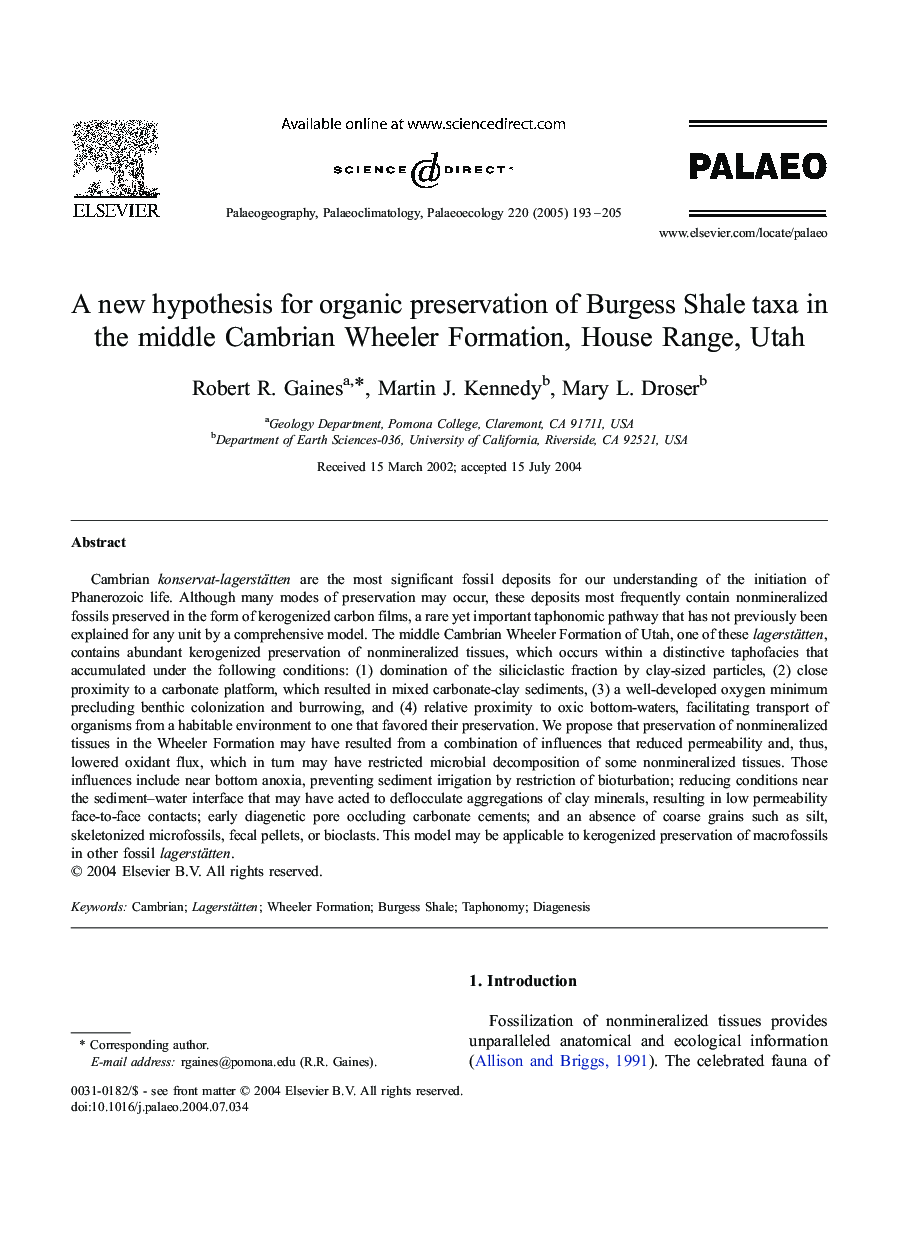| کد مقاله | کد نشریه | سال انتشار | مقاله انگلیسی | نسخه تمام متن |
|---|---|---|---|---|
| 9463222 | 1622397 | 2005 | 13 صفحه PDF | دانلود رایگان |
عنوان انگلیسی مقاله ISI
A new hypothesis for organic preservation of Burgess Shale taxa in the middle Cambrian Wheeler Formation, House Range, Utah
دانلود مقاله + سفارش ترجمه
دانلود مقاله ISI انگلیسی
رایگان برای ایرانیان
کلمات کلیدی
موضوعات مرتبط
مهندسی و علوم پایه
علوم زمین و سیارات
فرآیندهای سطح زمین
پیش نمایش صفحه اول مقاله

چکیده انگلیسی
Cambrian konservat-lagerstätten are the most significant fossil deposits for our understanding of the initiation of Phanerozoic life. Although many modes of preservation may occur, these deposits most frequently contain nonmineralized fossils preserved in the form of kerogenized carbon films, a rare yet important taphonomic pathway that has not previously been explained for any unit by a comprehensive model. The middle Cambrian Wheeler Formation of Utah, one of these lagerstätten, contains abundant kerogenized preservation of nonmineralized tissues, which occurs within a distinctive taphofacies that accumulated under the following conditions: (1) domination of the siliciclastic fraction by clay-sized particles, (2) close proximity to a carbonate platform, which resulted in mixed carbonate-clay sediments, (3) a well-developed oxygen minimum precluding benthic colonization and burrowing, and (4) relative proximity to oxic bottom-waters, facilitating transport of organisms from a habitable environment to one that favored their preservation. We propose that preservation of nonmineralized tissues in the Wheeler Formation may have resulted from a combination of influences that reduced permeability and, thus, lowered oxidant flux, which in turn may have restricted microbial decomposition of some nonmineralized tissues. Those influences include near bottom anoxia, preventing sediment irrigation by restriction of bioturbation; reducing conditions near the sediment-water interface that may have acted to deflocculate aggregations of clay minerals, resulting in low permeability face-to-face contacts; early diagenetic pore occluding carbonate cements; and an absence of coarse grains such as silt, skeletonized microfossils, fecal pellets, or bioclasts. This model may be applicable to kerogenized preservation of macrofossils in other fossil lagerstätten.
ناشر
Database: Elsevier - ScienceDirect (ساینس دایرکت)
Journal: Palaeogeography, Palaeoclimatology, Palaeoecology - Volume 220, Issues 1â2, 2 May 2005, Pages 193-205
Journal: Palaeogeography, Palaeoclimatology, Palaeoecology - Volume 220, Issues 1â2, 2 May 2005, Pages 193-205
نویسندگان
Robert R. Gaines, Martin J. Kennedy, Mary L. Droser,